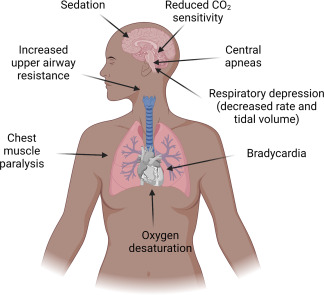What is the best nursing intervention for a pregnant woman in her third trimester who complains of feeling faint, dizzy, and agitated while her vital signs are being assessed?
Have the patient stand up and retake her blood pressure.
Have the patient lie supine for 5 minutes and recheck her blood pressure on both arms.
Have the patient sit down and hold her arm in a dependent position.
Have the patient turn to her left side and recheck her blood pressure in 5 minutes.
The Correct Answer is D
Choice A reason: This is not a good intervention, as it may worsen the symptoms of faintness, dizziness, and agitation. Standing up can cause a sudden drop in blood pressure (orthostatic hypotension), which can reduce the blood flow to the brain and the fetus. This can cause lightheadedness, blurred vision, and loss of consciousness in the woman, as well as fetal distress or hypoxia.
Choice B reason: This is not a good intervention, as it may also worsen the symptoms of faintness, dizziness, and agitation. Lying supine can cause compression of the inferior vena cava (a large vein that returns blood to the heart) by the gravid uterus, which can reduce the cardiac output (the amount of blood pumped by the heart) and the blood pressure. This can cause nausea, sweating, and visual disturbances in the woman, as well as fetal distress or hypoxia.
Choice C reason: This is not a good intervention, as it may not improve the symptoms of faintness, dizziness, and agitation. Sitting down and holding the arm in a dependent position can lower the blood pressure in the arm, but not in the rest of the body. This can cause inaccurate readings of the blood pressure and delay the detection of hypotension or hypertension. This can also cause discomfort and pain in the arm due to impaired circulation.
Choice D reason: This is the best intervention, as it can relieve the symptoms of faintness, dizziness, and agitation by improving the blood flow to the brain and the fetus. Turning to the left side can reduce the pressure of the uterus on the inferior vena cava and increase the cardiac output and the blood pressure. This can also optimize the placental perfusion (the blood flow to the placenta) and the fetal oxygenation.
Nursing Test Bank
Naxlex Comprehensive Predictor Exams
Related Questions
Correct Answer is D
Explanation
Choice A reason: A daily consumption of alcohol does not necessarily indicate a risk for alcoholism, although it is not recommended for pregnant women. Alcoholism is a chronic disease that involves physical and psychological dependence on alcohol, and it requires more than one criterion to be diagnosed.
Choice B reason: She will not be at risk for abusing other substances as well, unless she has a history or predisposition for substance abuse. Alcohol use during pregnancy does not cause other substance abuse problems, although it may co-occur with them.
Choice C reason: The fetus is not at risk for multiple organ anomalies, unless the mother consumes large amounts of alcohol during the first trimester of pregnancy. This can cause fetal alcohol syndrome (FAS), which is characterized by facial dysmorphia, growth retardation, and intellectual disability. However, FAS is rare and not related to moderate alcohol intake during the second trimester.
Choice D reason: The fetus is placed at risk for altered brain growth, as alcohol can cross the placenta and affect the developing nervous system of the fetus. Alcohol exposure during the second trimester can impair the formation and migration of neurons, leading to reduced brain size and function. This can result in learning difficulties, behavioral problems, and cognitive impairments in the child.
Correct Answer is C
Explanation
Choice A reason: A sleepy, sedated affect is not a concerning sign, as it is a common side effect of magnesium sulfate. Magnesium sulfate is a central nervous system depressant that can cause drowsiness, lethargy, and reduced alertness.
Choice B reason: Absent ankle clonus is not a concerning sign, as it indicates a normal neuromuscular response. Ankle clonus is a rhythmic jerking of the foot when the ankle is dorsiflexed. It is a sign of hyperreflexia, which can occur in severe preeclampsia due to increased blood pressure and cerebral edema.
Choice C reason: A respiratory rate of 10 breaths/min is a concerning sign, as it indicates respiratory depression. This is a serious complication of magnesium sulfate toxicity, which can lead to respiratory arrest and death. The nurse should monitor the woman's respiratory rate closely and report any signs of respiratory distress.
Choice D reason: Deep tendon reflexes of 2+ are not a concerning sign, as they indicate a normal neuromuscular response. Deep tendon reflexes are graded from 0 to 4, with 2 being the average. Magnesium sulfate can cause hyporeflexia or areflexia, which are signs of magnesium sulfate toxicity.

Whether you are a student looking to ace your exams or a practicing nurse seeking to enhance your expertise , our nursing education contents will empower you with the confidence and competence to make a difference in the lives of patients and become a respected leader in the healthcare field.
Visit Naxlex, invest in your future and unlock endless possibilities with our unparalleled nursing education contents today
Report Wrong Answer on the Current Question
Do you disagree with the answer? If yes, what is your expected answer? Explain.
Kindly be descriptive with the issue you are facing.
